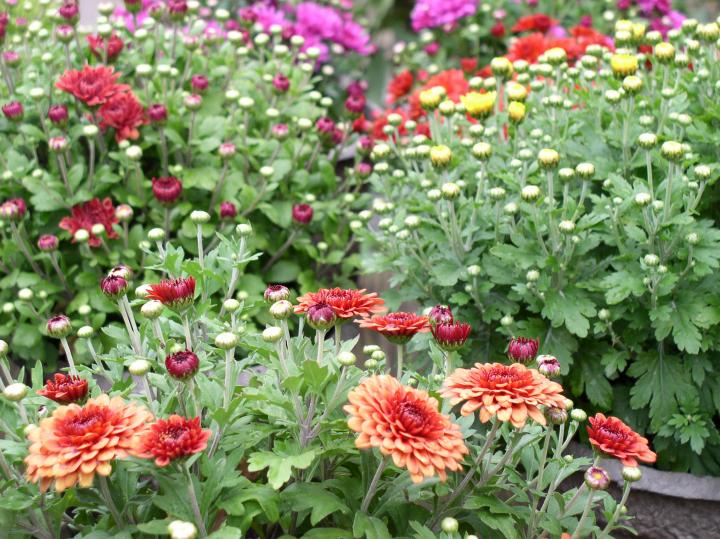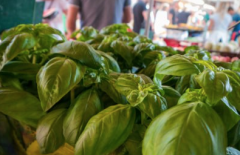How do geraniums / rosemary / roses survive the winter? How perennials and tropical plants survive the winter
Learn how to correctly cross your garden plants to protect them from snow, wind and freezing temperatures. They will thank you in the spring!
How to winter geraniums: before the first frost (find the frost date in your area here), cut the plant into about 6 to 8 inches. Then lift the plant and cut off the roots. Place the trimmed plants in the smallest basin-the container is large enough to hold the roots. Fill the remaining space in the pot with conventional filling soil. Keep the plants in the shade for a week, then put them in a sunny place indoors. When new growth begins, cut off all old leaves.
How to survive the winter rosemary: this culinary herb prefers to live in a pot and can successfully survive as an indoor plant year after year. Before it frosts in autumn, dig it out, put it in a pot, and put it indoors. Put it in a sunny window and keep it watered evenly. Often wet the leaves or put the whole plant in the shower and rinse once a month. By March, the factory may start to look a little tired, but once you send it back to the garden, it will cheer up. After all the frost dangers have passed, dig a hole at the end of spring and put the plant back into the soil.
How to survive the winter roses: roses need thick insulation to help them stay dormant. For those grafted, such as hybrid tea, make sure their graft joints are covered with soil to insulate them from low temperatures. After freezing once or twice, accumulate 12 inches of soil around the base of the rose bushes. Non-floral roses, such as rugosas and antiques, do not need much protection. Cover the ground around them with a few inches of straw or broken leaves.
All climbing roses need to be protected. Pull down the canes, put them on the ground, and cover them with at least 6 inches of soil. There are also mounds around the plant base. If your winter temperature is below-10 °F, leave the vines in place and wrap burlap or old sheets with thick straw.
How to make perennials survive the winter: to encourage your perennials, especially new plants, to dormant and maintain this state during the inevitable freeze-thaw cycle in winter, you can apply covered straw, leaves or other organic matter after the first few hard frosts. If you cover the ground prematurely in the fall, rodents may find the comfortable layer impossible to resist, and the mulch may freeze the ground solid. Please refer to our article on preparing your perennial garden for winter.
How tropical plants survive the winter: many tropical plants grow from underground bulbs, bulbs or tubers, including Fritillaria, calla lilies, canna, dahlias, ginger, and tuber begonias. These plants survive the winter easily. When the night falls below 40s or 30s, the leaves turn brown and begin to die. This is a hint that you dig or lift them. You can wait until you kill the frost before you can dig dahlias and canna. )
Remove dirt from the swollen roots and solidify them in a shaded area or on a newspaper in the garage for a few days. Cut off the top and put the bulbs, bulbs and tubers into a box filled with dried peat moss or vermiculite. Store in a dark area with a temperature between 35 °F and 50 °F.
When spring comes, replant the enjoyment of another year. As they are preserved year by year in this way, globular tropical plants will increase their number and produce larger bulbs, bulbs and tubers.

- Prev

Is sage easy to grow? How to grow and harvest sage How to care for sage
Garden sage grows easily and is a delicious culinary herb that can spice meat and bean dishes (including Thanksgiving fillings). Learn how to plant and harvest sage. Sage is a hardy perennial with beautiful greyish green leaves
- Next

French sweet basil variety Marseilles basil, what is Marseilles basil and how to plant Marseilles basil?
Any kind of basil is the favorite herb for gardeners and cooks. One of the most important reasons why we like this herb is its delicious aroma. The French variety Marseille is one of the most fragrant varieties. So, if you like the smell of basil
Related
- A course of planting techniques and methods on how to grow carrots
- How to plant the latest tulips?
- Is it better to pick tea in the morning or in the afternoon? When is the best time for tea to be picked? what is the third or fifth tea?
- Launch Yuanxiao Happy combination Haocha + Tea Yuan healthy Taste
- Penghu Tourism "Fireworks 20 Parade with You"
- 2022 West Lake Happiness holds "Digital Revitalization Voucher" and draws iphone13 and laptop.
- Banqiao Fuzhou social houses are designed to change start-up combined with police elimination to create a safe and livable environment
- The convenient measure of "mechanical weeding" in Xinbei has been abused and the Agriculture Bureau has imposed heavy penalties on the illegal land consolidation.
- Changgeng University Joins Hands with Four Memory Factories to Rescue Memory Talent Shortage
- The list of Taiwan's top 100 MVP managers is listed by the Director-General of the Farmers' Association of Sanxia District.

